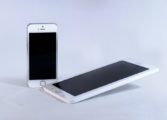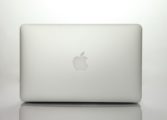Apple USB-C: A Comprehensive Guide to the Future of Connectivity

Introduction
In today’s digital world, staying connected has become an integral part of our daily lives. Whether it’s charging our devices or transferring data at lightning-fast speeds, having a reliable and efficient connection is paramount. Apple USB-C has emerged as a revolutionary technology, transforming the way we interact with our devices. This article aims to provide an in-depth overview of Apple USB-C, exploring its various types, popularity, quantitative measurements, differences, and historical advantages and disadvantages.
Apple USB-C Overview

Apple USB-C, also known as USB Type-C, is a cutting-edge connectivity standard developed by Apple. Unlike its predecessors, the USB-C port is incredibly versatile, offering a reversible design that can be plugged in no matter the orientation. This convenience makes it a game-changer, eliminating the frustration of flipping connector cables multiple times. With a compact form factor, the USB-C port is slim and sleek, allowing for thinner and lighter devices, while still maintaining robust functionality.
Types of Apple USB-C
Apple offers a range of USB-C adapters and cables to cater to different needs. Firstly, the USB-C to Lightning Cable enables fast charging and data syncing between Apple devices, such as iPhones and iPads. It has gained immense popularity for its ability to charge devices up to 50% in just 30 minutes. Additionally, Apple’s USB-C to USB-C Cable is perfect for connecting USB-C enabled Macs or iPads to other USB-C devices or power adapters. This cable can transfer data at incredibly high speeds, making it ideal for users looking to transfer large files quickly.
Furthermore, Apple’s USB-C Digital AV Multiport Adapter is a versatile accessory that allows users to connect their USB-C enabled Mac or iPad to an HDMI display, USB-A device, and power source simultaneously. This adapter is fantastic for presentations, allowing users to connect their devices to larger screens effortlessly.
Quantitative Measurements of Apple USB-C
To measure the capabilities and performance of Apple USB-C, several quantitative metrics come into play. Transfer speeds are a crucial aspect of any connector, and USB-C delivers exceptional results. With USB 3.1 Gen 2 technology, data transfer rates of up to 10 Gbps can be achieved, allowing for swift file transfers and efficient backups. Moreover, USB-C also supports Thunderbolt 3, enabling blisteringly fast transfer speeds of up to 40 Gbps, which is perfect for multimedia professionals working with large files.
Differences and Distinctions among Apple USB-C Variants
While USB-C is a universal standard, it is crucial to understand the differences among various USB-C variants. Apple has made significant advancements in USB-C technology, and their products stand out from the competition. One notable difference is Power Delivery (PD). Apple’s USB-C devices support the USB PD standard, which allows for fast charging with up to 100W of power delivery. This means that not only can devices be charged rapidly, but laptops and other power-hungry devices can also be powered using a USB-C connection.
Another distinction lies in the integration of Thunderbolt 3 technology. Apple’s Thunderbolt 3-enabled USB-C ports open a world of opportunities, providing support for high-resolution displays, external GPUs, and other Thunderbolt accessories. This level of versatility is unmatched, elevating the USB-C experience and revolutionizing connectivity possibilities.
Historical Advantages and Disadvantages of Apple USB-C
When Apple introduced USB-C, it was met with both enthusiasm and skepticism. One historical advantage is its versatility, consolidating multiple ports and connectors into a single sleek design. This convenience simplifies the user experience and reduces clutter. Additionally, USB-C’s reversible design eliminates frustration, offering a foolproof connection every time.
However, early iterations of USB-C faced compatibility challenges with older USB standards. Users had to rely on adapters to connect their existing devices, resulting in additional expenses. Moreover, the initial scarcity of USB-C accessories and cables made it challenging for early adopters to fully utilize its potential. Thankfully, Apple and other manufacturers have since addressed these concerns, and USB-C has become more prevalent and widely supported.
Conclusion
In conclusion, Apple USB-C is a game-changing technology that has revolutionized connectivity and streamlined device interactions. With its reversible design, impressive transfer speeds, and compatibility with Thunderbolt 3, USB-C is the future of connectivity. Apple’s advancements in USB-C technology, such as Power Delivery and integration with Thunderbolt 3, set their products apart from the competition. As USB-C continues to evolve, its historical advantages far outweigh the initial challenges it faced. Embracing Apple USB-C means embracing a future where connectivity is seamless, efficient, and versatile.
Reference:
– ”USB-C: The only guide you need to know” by Mitchell Broussard (insert actual article link)
















































